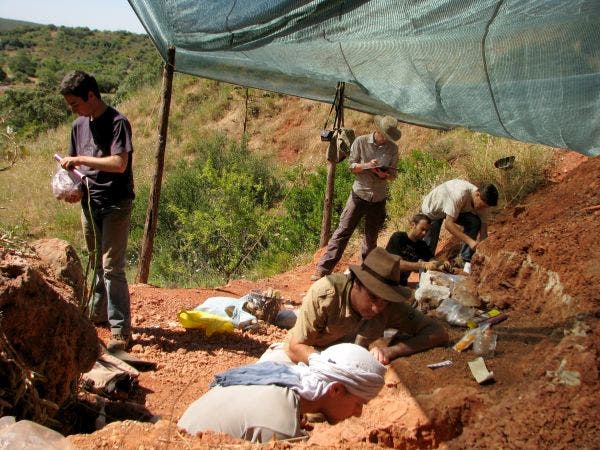Paleontologists have found the remains of a “super salamander” – a previously unknown car-sized species of early amphibian. The predatory salamander likely feasted on fish and even small dinosaurs.
“This new amphibian looks like something out of a bad monster movie. It was as long as a small car and had hundreds of sharp teeth in its big flat head, which kind of looks like a toilet seat when the jaws snap shut,” said Dr Steve Brusatte, of the University of Edinburgh’s School of GeoSciences, who led the study.

Scientists now know quite a lot about these creatures – they lived together in large numbers, grew up to more than 2 meters, and lived in low-lying lakes and rivers during the Late Triassic Period, the first major stage of the Mesozoic. Researchers can say for sure that it is a new species, judging by its jaw structure and parts of the skull where the spinal cord meets the brain.
“We have a mass graveyard of these things that looks like hundreds of individuals all jumbled together,” Steve Brusatte, who led the study, told The Washington Post in a phone interview. “These things lived and died together. We have skeletons of many different individuals, adults and children … We know what it ate, how it moved and what it was like when it was alive.”

The species is now called Metoposaurus algarvensis, named after the Algarve province in southern Portugal where it was discovered. The area where they found it likely contains many more still undiscovered fossils, but to date, only a fraction of them were actually excavated.
“There is a real jumble of bones in there, but it’s been challenging to remove them because they come from a bone bed that is about half a metre thick and goes into the hillside,” said Steve Brusatte, who led the study. The team have spent two field trips excavating bones from the site and hope to return to collect more of the remains.
For all its spectacular size, Metoposaurus algarvensis had puny legs, which indicates that it mostly hunted in the water, as it wasn’t specially adapted to land. It was likely quite vulnerable on land. This is the first member of the Metoposaurus group found in the Iberian peninsula (Portugal and Spain). But despite their strange looks, they were likely quite common in the area.
“It looks like an alien — it looks like it’s from another world,” Brusatte said. “But these animals weren’t rare at all.” Indeed, big amphibians dominated planet Earth until volcanic activity associated with Pangea’s break-up paved the way for the T. Rex and its dino compatriots.
Journal Reference: Stephen L. Brusatte, Richard J. Butler, Octávio Mateus & J. Sébastien Steyer. A new species of Metoposaurus from the Late Triassic of Portugal and comments on the systematics and biogeography of metoposaurid temnospondyls. DOI:10.1080/02724634.2014.912988


